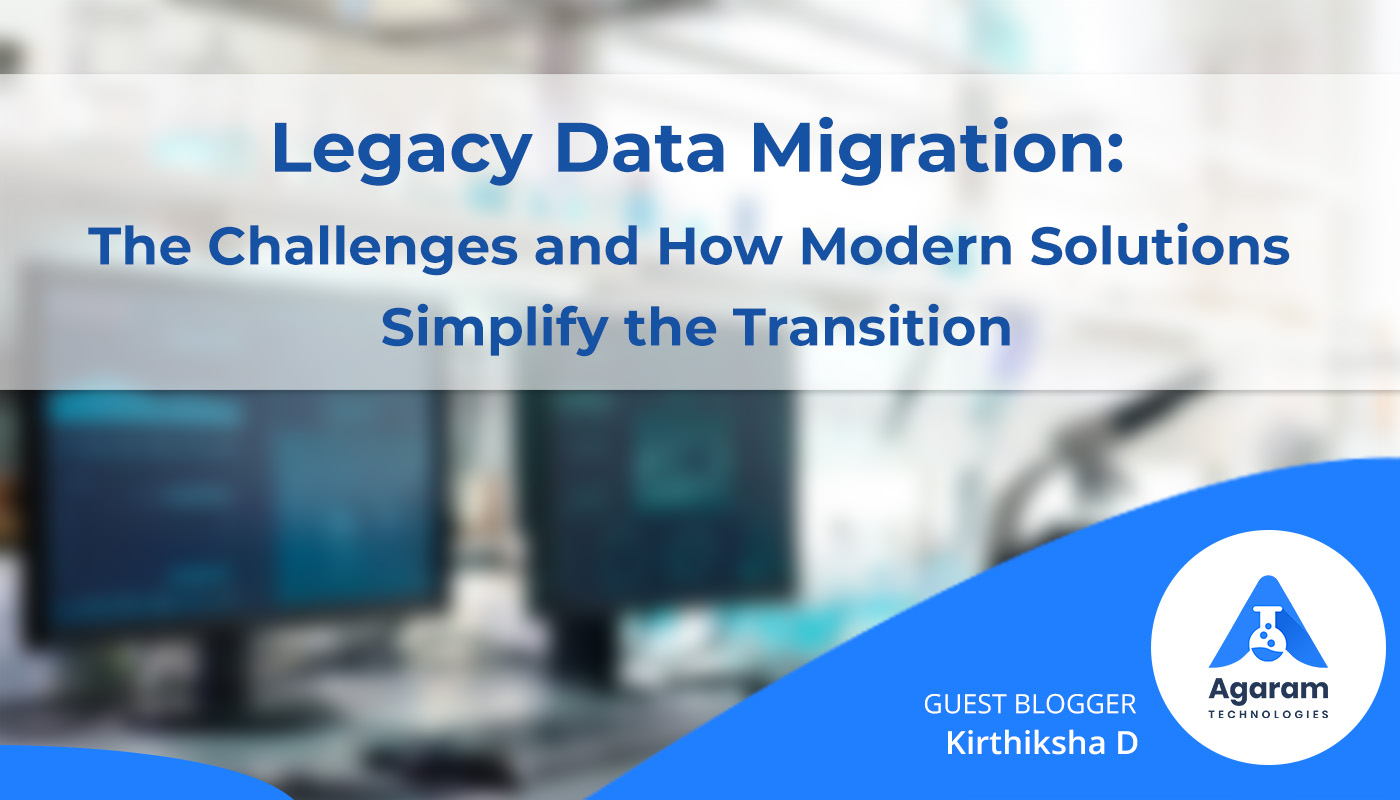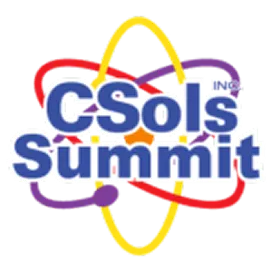Agaram Technologies is a seasoned pioneer in the realm of laboratory informatics, earning its reputation as a leading provider of enterprise-class software products for laboratories and analytical instrumentation manufacturers across the globe. Agaram offers a range of feature-rich, flexible digital solutions such as Qualis LIMS, Logilab ELN, and Logilab SDMS that help laboratories streamline data management, achieve regulatory compliance, stay audit ready, and optimize overall operational performance.
Despite stringent regulatory standards, laboratories worldwide still rely on paper-based and outdated systems to record and manage critical research data. In a time when scientific innovation is possible every single day and compliance expectations are higher than ever; many labs continue to use manual logbooks, standalone databases, and legacy software instances that struggle to meet modern operational requirements.
As laboratories begin to embrace digital transformation, one of the biggest hurdles they face is migrating years of legacy data into modern, integrated platforms. This shift is essential not only for improving efficiency and accessibility but also for maintaining regulatory compliance, data integrity, and scalability in an increasingly connected research landscape.
In this blog post, we’ll explore the limitations of legacy systems and the key challenges laboratories face during legacy data migration, as well as highlight how intuitive laboratory informatics solutions such as LIMS (Laboratory Information Management System), ELN (Electronic Laboratory Notebook), SDMS (Scientific Data Management System), or scientific data platforms simplify this complex journey.
Why Legacy Systems Are an Issue
Science wouldn’t have advanced this far without the paper-based systems that once formed the foundation of laboratory operations. However, they’re no longer enough. The points below highlight some of the key challenges laboratories face when depending on paper records, standalone databases, and fragmented legacy platforms.
- Paper-based and outdated systems make it difficult to maintain consistency and traceability across laboratory workflows. Manual data entry and disjointed documentation lead to errors and version control issues.
- Limited compatibility and poor integration with modern informatics tools restrict automation and scalability. Legacy systems often cannot interface with advanced analytical instruments, preventing seamless data exchange.
- Frequent issues with exporting data due to old file formats or incomplete metadata. Without standardized data structures, laboratories face challenges in reusing or analyzing data.
- Lack of traceability across samples, instruments, and reports increases compliance risks. When audit trails are incomplete or disconnected, it becomes difficult to demonstrate adherence to Good Laboratory Practice (GLP) and other regulatory standards.
- Security and data integrity issues can lead laboratories to potential audit failures. Legacy systems often lack modern encryption, access control, and backup capabilities, leaving critical research data vulnerable to unauthorized access, corruption, or loss.
- High maintenance costs strain IT resources and budgets. Supporting outdated software/hardware requires specialized expertise and frequent manual work, wasting valuable money and time.
- Fragmented legacy environments force users to navigate multiple disconnected systems for daily tasks. This creates a chaotic workspace that is frustrating when attempting to conduct research.
- Limited data accessibility across legacy platforms prevents teams from collaborating efficiently. There is no easy way for them to access and share critical information in real time.
Challenges in Legacy Data Migration
Migrating years or even decades of laboratory data is a complex process that goes far beyond simple file transfer. It involves dealing with inconsistent formats, incomplete records, and fragmented systems that were never designed to communicate with modern platforms. Ensuring data integrity, compliance, and usability during this transition requires careful planning, validation, and expertise. Some of the challenges during data migration include:
- Data Variety and Volume: Laboratories generate vast amounts of data, from instrument files to chromatograms, reports, spreadsheets, and more. Managing this variety of data requires specialized extraction and standardization methods.
- Data Quality Issues: Legacy data may contain inconsistencies, missing audit trails, or duplicate entries. Validating this information is critical to ensure data reliability in the new system.
- Context Preservation Problems: Beyond moving data, it’s essential to retain the relationships between samples, test results, batches, and instruments to ensure continuity of the research context and traceability.
- Downtime and Operational Delay: Poorly planned migrations can disrupt ongoing research or daily lab operations, resulting in downtime and productivity loss.
How Modern Lab Platforms Simplify Legacy Data Migration
Modern laboratory informatics systems such as LIMS, ELN, SDMS, and scientific data platforms are designed not only to streamline current lab operations but also to simplify the complex task of legacy data migration. Unlike legacy systems that store data in fragmented, isolated formats, these modern solutions provide a centralized, structured, and compliant framework for transferring legacy data records into digital environments. By combining automation and integrated validation, they ensure that every piece of migrated information retains its accuracy, context, and regulatory integrity.
- Automated Data Capture and Import: Digital solutions enable automated extraction of legacy records from diverse sources including instruments, databases or spreadsheets, as well as seamless file import in multiple formats, be it Excel, Word, CSV, or PDF, reducing manual intervention and minimizing data loss or duplication.
- Data Validation and Standardization: Built-in data validation flags inconsistencies, missing fields, and duplicates before importing. This ensures that only accurate, verified information enters the new environment.
- Context Preservation: During migration, relationships between samples, analyses, batches, and instruments are maintained. This preserves the scientific and operational meaning of legacy data, making it usable for audits, reporting, and research continuity.
- Searchability and Accessibility: Once migrated, data becomes fully searchable and indexable. Users can quickly retrieve records based on sample ID, experiment type, batch number, and more. With an intuitive folder-based interface, these modern digital platforms offer an organized and user-friendly data management environment.
- Regulatory Compliance and Audit Trails: Every user action in the migration process is automatically logged. Secure audit trails and access controls help maintain compliance with standards such as 21 CFR Part 11, EU Annex 11, and ALCOA+ principles. Your lab can be audit ready with intuitive digital solutions designed for the needs of today’s modern laboratories.
- Scalable Storage and Cloud Deployment: Cloud or hybrid infrastructures provide scalable storage to accommodate decades of legacy data while ensuring high availability, secure backup, and easy remote access for global teams.
- Validation and Testing Support: Automated comparison tools verify data consistency between the legacy and target systems, ensuring nothing is lost or altered during migration. Postmigration validation ensures readiness for operational and regulatory audits.
Why Digital Transformation Is Necessary
Legacy data migration is not just a technical consideration; it’s a strategic step toward digital transformation. By adopting modern informatics platforms like LIMS, ELN, and SDMS, laboratories can move beyond disjoint systems and gain a unified, compliant, and future-ready lab environment. These solutions not only safeguard the integrity and traceability of legacy data but also enhance its potential for collaboration, analytics, and innovation, pushing laboratories forward in the digital age.
Would you like to learn more about laboratory informatics products from Agaram? Consider booking a demo.




Comments